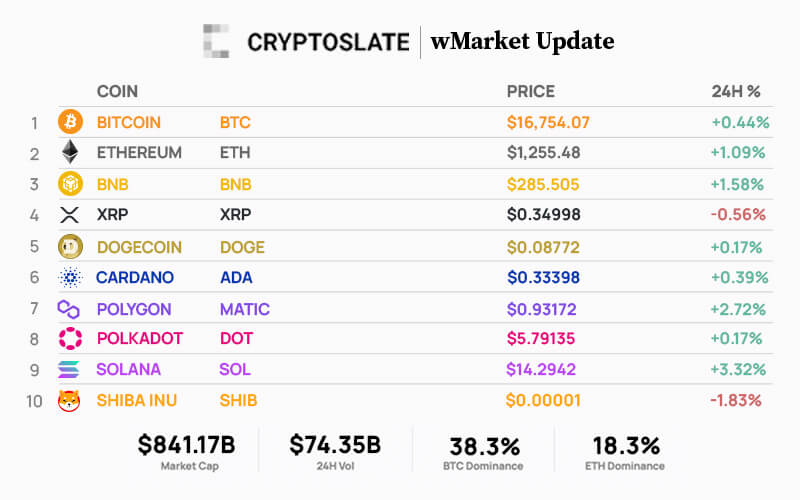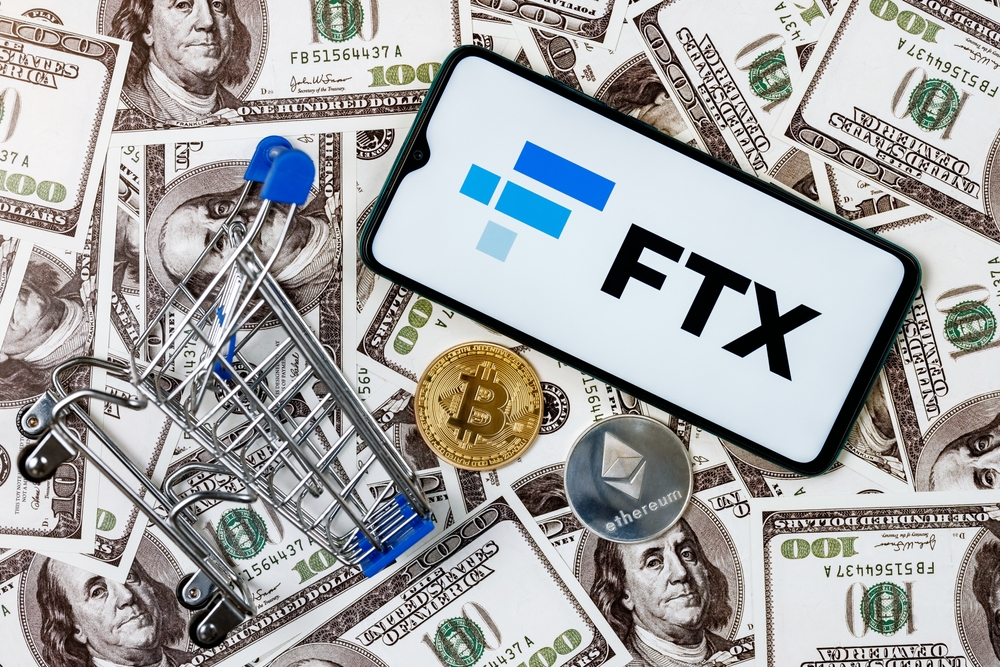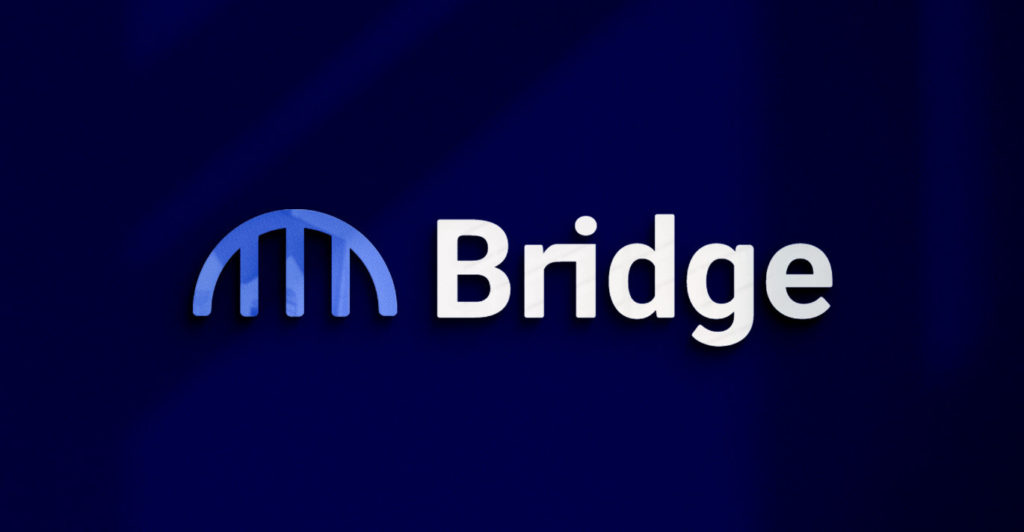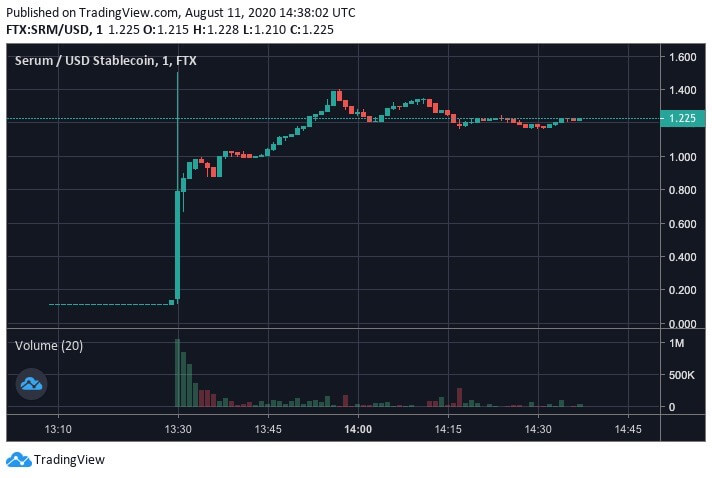2022-11-17 02:03 |
What happened here was not a mistake; it is not that they were hacked. They took several decisions to put at risk customer assets.
The crypto industry saw dark days over the past week. FTX, the former second-largest exchange in the world, crumbled. The fallout continues to ripple across the industry, with FTX-backed companies filing for bankruptcy, users filing for lawsuits, and regulators sharpening their claws.
In this context, we sat with Paolo Ardoino, Chief Technical Officer (CTO) for Tether and crypto exchange Bitfinex to get his opinion about recent events. Paolo joined us from El Salvador, the first country to make Bitcoin legal tender, a historical place for the nascent asset class.
Two major events in the industry’s history came together from this location, the celebration of mainstream adoption by a nation-state and the fall from grace of one of its golden boys, Sam Bankman-Fried. Paolo gave his perspective on real adoption in the Latin American Country, and the recent events that ushered in the collapse of FTX.
His message revolved around education, self-custody, and the work ahead for crypto exchanges, users, and all actors across the crypto space. This is what he told us:
Q: You were on the ground in El Savador, the first country to make Bitcoin legal tender. Are people using Bitcoin for daily payments? How do you see things down there in terms of adoption?
PA: So adoption, you know, so we see adoption in among, first of all, commercials, and businesses. The adoption when it comes to people and retail, the consumers, is still not widespread. I think it’s normal.
So is fully normal, you know, thinking and pretending that after just one year, everyone in the streets would use Bitcoin. That is super far-fetched. The usage of Bitcoin comes with infrastructure, and building infrastructure requires time, even when Europe moved from, you know, all the different currencies of the different countries to one single currency called Euro. It took several years up to six years to prepare everyone for the passage. And that was, you know, a forced passage to a single option that was Europe and is in El Salvador.
Bitcoin is being used as an option for dollars. So, my point is that it will take several years in order to create adoption, and that is completely normal. And the only thing we can do is to keep building infrastructure and support and make the user experience more seamless.
Q: How are you guys contributing to crypto adoption?
PA: First, we have supported different educational platforms like “Mi Primer Bitcoin.” We are working directly with the government to try to set up courses at different levels from universities and high schools for Bitcoin education, right?
We cannot pretend that adoption will happen by itself, it will happen only when people understand why Bitcoin matters. We at BitFinex are devoting resources. Well, of course, we devoted resources when it came to, you know, helping the families affected by the Pandemic or by the hurricane, but that is just the first step.
The important part is starting with all the educational projects that we have, and so also we are kind of excited because more and more with all the different things that will happen in the next months. El Salvador will stay on the map and we will become more prominent because there is also a securities law (to be introduced) that will enable companies to raise capital and create a securities tokens like you know, issue bonds issue or stocks and raise capital through Bitcoin. So more and more so. The infrastructure has to be at all levels, it cannot be just retail, it cannot just be consumer, it cannot just be shops, (there has to be) a full immersion of Bitcoin as a payment option as a capital raise option for companies here.
Q: Do you believe the last week, with FTX collapsing, users losing millions on the platforms, and regulators coming after the industry, will change anything for crypto adoption?
PA: Well, I think that the last week just showed that there is a big difference between Bitcoin and everything else. We have seen an exchange that actually devoted itself to altcoins with some debatable approaches to the point where they were actually managing these tokens to go bankrupt. The sad, sad story is that many people had bitcoins on those exchange and that exchange, and they thought they had Bitcoins on that exchange, but now they realize they don’t have any more Bitcoins.
It shows the (importance) of holding your bitcoins in your private wallet, right? So, not everyone can do that yet, right? Because there is some user experience challenges because no one is comfortable, and not everyone is comfortable to store its own bitcoins privately, but I think that what happened is making more and more the case of for companies to research in building applications that can help the self custody of Bitcoins.
And again, as I said, (the FTX collapse) also showed the difference between Bitcoin as more reliable, more secure, un-censorable money network and the rest. The industry will learn that you know, you cannot lend out other people’s money. You cannot use other people’s money to buy stuff. And so on. What happened here was not a mistake, it is not that they were hacked. They took several decisions to put at risk customer assets.
Q: What do you think will come out of this debacle, if anything? The industry likes to believe that it learned something from FTX’s mistakes, how do you spot another future Sam Bankman-Fried as a bad actor?
First of all, if something is too good to be true, that is already a problem, right? I mean, these guys were offering you know, things that all the other exchanges were not offering to grow faster, but you know, in the end really, it was too good to be true.
I think that FTX was always vocal against proof of work, and it was vocal against the usage of cryptocurrencies, including stablecoins, for decentralized finance (DeFi) or for interactions without intermediaries. So, they were quite vocal in working with regulators to increase their grip in our industry, in a sense that created some panic among the industry. We understand that regulations will come and there is some sort of need for it but we are now in a situation where we risk over-regulation.
Hence, we’re at risk of crippling the industry, the potential, and the innovation that it can create. Honestly, I’m talking to many people that are extremely pissed by the fact that we took a three years step back.
We are at the same situation of the ICO (Initial Coin Offering) era. And we have to put even more effort to regain the trust of the users and educate them on how to properly keep their funds under their own custody. So, really it is a complex process that requires energy that should be better invested in Bitcoin adoption. Yet we have to fight the fight to show that not everyone in the space is the same (as Sam Bankman-Fried). There are bad actors and good actors.
Q: Tether was one of the first to freeze FTX funds. How do you work with authorities to make that decision? Were there any red signals about FTX, Sam, and Alameda before their collapse influencing the decision?
PA: We (Tether) received a law enforcement request. You might have seen later on also the SCB, the security commission of Bahamas, issued a statement that was connected to our freezing process. We get contacted by law enforcement and we have to act, keep in mind that Tether is a centralized stablecoin. Because although it uses the decentralized transport layer is a centralized stablecoin. We have to comply with the requirements of law enforcement. And honestly, I was pleased that we were extremely quick to act to save a little bit of money of users. Because, you know, after they went bankrupt they were also hacked. So, it’s putting oil on the fire.
Q: In the wake of FTX, there are reports about massive crypto withdrawals from exchanges; Bloomberg reported over $3 billion in the past week alone. Is Bitfinex prepared to deal with a bank run? And in that sense, will the FTX incident force all major exchanges to adopt some proof of reserve mechanism and become more accountable to users?
PA: Absolutely. So with BitFinex, we released the proof of reserves that shows that BitFinex has around $7.5 to $8 billion in custody on the platform. So that, you know, for us is important to show to the jury. Just let me take a step back of those assets. The majority is in Bitcoin and Ethereum, it is not some sort of vaporware coins that you create. So that to us is quite important because shows that BitFinex probably has the second biggest wallet in the world. We have the funds that we are supposed to have under our custody.
We showed the proof of reserves and also we published or republished a project that we have been working for some time. Called “Antani”, it is an open source library that allows us to publish a proof of liabilities, because with proof of reserves, you don’t have the full picture. You also need the proof of liabilities.
But in general, a good message would be that exchanges should teach their users to keep custody of your own tokens on exchanges. 50% of the assets deposited on exchanges, probably more but to be safe, is not used for trading.
Exchanges should be used for trading, they should not be your custodians. You should have a Ledger Wallet. You should have a multi-SIG, you should try to do your own setup, and that’s what exchanges should teach. I represent an exchange. And I believe that people should learn more about self-custody.
Q: Finally, Paolo, where do you think the industry will be in 2023 and 2033? Was the collapse of FTX, as some called it, part of the industry’s “growing pains”? What changes need to be implemented to take the next step forward in adoption?
PA: The industry has to mature. In one way or the other, it will need to mature and I think that the work that we are doing at BitFinex is actually going in that direction; to try to lead the way in this maturing process.
We are providing the tools, our mission is to (help) companies and even governments, like what we are doing elsewhere with the traditional financial system right we want to create more options for people and governments to access capital. And we want to reinforce our focus on Bitcoin.
Of course, we are an exchange we have to provide options, but in our heart is Bitcoin. We will always keep Bitcoin as our priority. More and more BitFinex will be considered the place to go if you want to you know interact with Bitcoin, learn about Bitcoin, learn about financial inclusions, and to educate yourself.
origin »FintruX Network (FTX) на Currencies.ru
|
|








